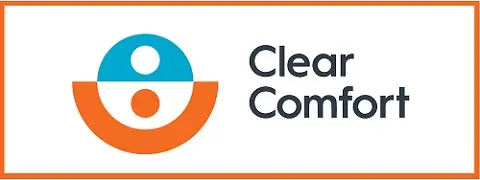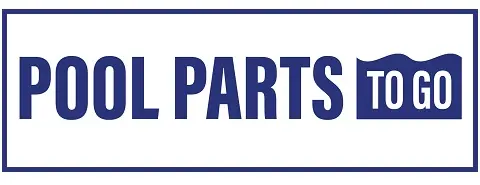Pool Filter Pressure
SwimmingPoolSteve.com is user-supported. In order to keep this resource about pools and spas available for free to all readers I earn commissions for purchases made through links on this page. For more information see the full disclaimer page. By using this website you are agreeing to the terms and conditions.
 I have two different articles about pool filter pressure that you might be looking for. The page you are on is the longer form discussion on the topic. If you are looking for a shorter answer to a shorter question please check out this page about what should my pool filter pressure be? Pool filter pressure is one of the most important details for monitoring the health of your pool system that the average pool owner is not utilizing properly. First of all at least half of the pool owners reading this page right now probably have a broken pressure gauge on their filter. If you are guilty of this yourself, and currently have no way of knowing what your system pressure is running at, then you should pick up a replacement at your earliest convenience. I often tell pool owners to pick up a couple of these gauges because the reality is that they are cheaply made and easily broken...but at least they are not expensive.
I have two different articles about pool filter pressure that you might be looking for. The page you are on is the longer form discussion on the topic. If you are looking for a shorter answer to a shorter question please check out this page about what should my pool filter pressure be? Pool filter pressure is one of the most important details for monitoring the health of your pool system that the average pool owner is not utilizing properly. First of all at least half of the pool owners reading this page right now probably have a broken pressure gauge on their filter. If you are guilty of this yourself, and currently have no way of knowing what your system pressure is running at, then you should pick up a replacement at your earliest convenience. I often tell pool owners to pick up a couple of these gauges because the reality is that they are cheaply made and easily broken...but at least they are not expensive.
If you do not have a functioning pressure gauge on your pool system then how will you know when it is time to clean out your filter? No matter what kind of filter you have, sand, cartridge or diatomaceous earth, all of these need to be periodically cleaned out. Sand filters need to be backwashed regularly. D.E filters need to be bumped, recharged, and periodically stripped down to clean the grids manually. Cartridge filters need to be opened and have the elements soaked in degreaser (not soaked in acid as many pool owners mistakenly do). For more information on the importance of soaking in a degreaser before (or instead of) acid washing filter elements then you can check out this article on how to clean pool filter cartridges. With all three of these filter types the indication that the filter needs service is all the same...the pressure gauge tells you so. If you do not have a functioning pressure gauge then you will have no way to know if, and when, your filter requires service. Cleaning your filter on a regular interval schedule is fine and well...until you develop an algae problem or too much oil in the pool that plugs up the filter overnight out of the blue.

Average pool system pressure - There is no such thing as an "average pool system pressure" because every pool is built differently. Every foot of pipe used, every fitting that is installed, the type of equipment (pump, filter, heater) that you have, the choice of valves, unions, pipe size, as well as the orientation and elevation of the equipment in relation to the pool all affect what the final system pressure will be. Your pool will have a pressure that is unique to only it. The addition of an extra 90 degree pipe fitting, or adding ten more feet of pipe to a return fitting would change the normal pressure that your system operates at. For this reason no example can be accurate for guessing average pool filter pressure other than to say it should be above zero and below 30 PSI with lower being better generally speaking.
Clean operational pressure - When a pool system is started up for the first time the system operating pressure should be noted and written down permanently next to the pool filter. This is called the clean operational pressure as this is the system pressure when the filter is the most clean, and the best (lowest) pressure that you can hope for your pool to operate at. I like to write with permanent marker on the wall right next to the pump so that the information can never become lost. If a major change is ever made to the system such as replacing the pump, or any other major change to the plumbing, then the new clean operational pressure for the pool should be noted and saved for future reference.
Dangerous filter pressure - If you do not have a functioning pressure gauge on your filter then you would have no idea if the pressure of the filter was dangerously high. Pool filters (and most pool equipment) is designed to operate normally up to 30 PSI. Also most pool equipment has a maximum pressure rating of 50 PSI and the area between 30 and 50 is your safety margin as a pool owner. You should never operate a pool system above 30 PSI and anything above this pressure should be regarded as dangerous.
As the filter becomes dirty over time, clogging up with both physical debris as well as oils, the pressure of the system will rise. When the pressure rises 7 PSI or more over the clean operational pressure, this indicates that it is time to service your filter. With a sand filter this will happen all the time as they require regular service in order to maintain normal system pressures. A D.E filter or cartridge filter can typically go much longer between services than sand but still it is very important to be able to monitor the system pressure for your pool. You do not need to wait until the pressure is at the maximum amount before you clean your filter. Cleaning early is better for your pool, your filter, and your pocket book, but it does take effort to make happen. There are a number of financial reasons why failure to monitor your filter pressure can cost you money in the long run.
High Filter Pressure Costs You Money
If you let your filter pressure get too high, whether because you have a broken pressure gauge or simply do not watch your system closely enough, this can end up costing you money. In addition to the fact that you can break your filter if the pressure is allowed to get too high, you can also seriously reduce the expected service life from your filter internals if you are constantly overworking it. When the pressure in your system rises this means that your pump must work harder to overcome the resistance to flow. While pumps are made to handle and overcome resistance to flow, there is a limit to this. If the pump is chronically fighting to push water through a mostly plugged filter then this will cause the pump to run hot, draw more current and operate less efficiently overall which means more heat being generated. Heat is a killer of electric motors and your filter pressure being too high will put undue strain on your pump.
The The San Francisco Pacific Gas & Electric swimming pool conversion program calculated that residential pool owners pay $276 annually for every additional PSI that their system runs at. This means if you tend to ignore your filter and run five PSI over what you should be operating at, this could cost you as much as $1000 every year in additional electricity costs! If that is not enough motivation to replace your pressure gauge and clean your filter more often then I don't know what is.
Allowing your pool system to run at excessively high pressures for long periods of time will also potentially damage the filter itself. Sand filters and D.E filters can experience premature failure of the plastic internal components due to high pressure, but cartridge filters especially are prone to (expensive) damage. By far the worst part about cartridge filters (the only bad part in my opinion) is the cost of replacement filter elements. If you constantly operate your pool at higher than normal pressures then this can cause the filter elements to wear quickly if not rip and fail completely. Given how expensive replacement cartridge filters are you definitely do not want to damage yours because you forgot to monitor the filter pressure. If you want more examples of how small changes can add up to big differences in how much it costs to operate your pool then check out this article about how to make your pool more energy efficient.
Normal Pool Filter Pressure
The normal pool filter pressure for your pool is whatever value you have recorded as your clean operational pressure. If you did not record this when the pool was first built then the best you can do is clean your filter thoroughly and then note the system pressure after starting the system with a freshly cleaned filter. For sand filters this would be an extra long backwash setting followed by a rinse setting.
For a D.E filter this would be stripping the filter down, cleaning the grids and recharging with D.E. For a cartridge filter this would entail opening the filter and soaking the elements in a filter cleaning degreaser. Once you know your normal system operating pressure then you can establish at what point you should clean your filter.
Cartridge filters - Open and clean elements when 7 PSI above clean operational pressures
Sand filters - Backwash when pressure rises 7 to 10 PSI above clean operational pressures
D.E filters - Strip, clean and recharge when pressure rises 5 to 10 PSI above clean operational pressures
**These are generic numbers for pool systems and it is important to remember that your pool pressure should never go above 30 PSI. It could be said that you need to clean your filter when the above conditions are met, or the pressure of the system reaches 30 PSI, whichever comes first.
If you have a variable speed pump or a two speed pump it is important to understand that this will affect the pressure that your system operates at. This is actually one of the reasons why variable speed pumps are so important and such an improvement over single speed pumps. For the purposes of monitoring filter pressure you must compare the clean operational pressure and the current filter pressure based on the same motor RPM's. You also must have the same valve orientation and system settings for your pluming to make for an equal comparison. Any time that you change your plumbing system, such as opening a skimmer valve or waterfall valve, or changing the orientation of any of your system valves, this will change the pressure that your system runs at. Be sure that when comparing your filter pressures that you do so under the exact same system configuration. Even something as small as removing the return eyeballs in the walls of your pool would change the value of your normal filter operating pressure.
This pool pressure gauge
This is a back mount pool pressure gauge
This genuine Hayward pressure gauge
This replacement Pentair pressure gauge
This Zodiac (Jandy) pressure gauge
This Zodiac air gauge release valve assembly
How to install a pressure gauge - When you install a pressure gauge many people make the mistake of burying the threads deep into the flange. Since the 1/4" pipe threads on the gauge are made from metal (usually brass) they are sharp and will easily cut into the relatively soft plastic flange of the filter. When you install these gauges you should wrap them with two or three wraps of teflon tape
Pool pressure gauges are notorious for breaking easily and often. You can tell if a pressure gauge is broken as it will not "zero out" when the pump is turned off. A gauge should always return to zero when you turn off the system (unless the equipment is below the elevation of the water level in the pool) or remove the gauge from the filter. If the gauge does not return to zero this is an indication the calibration is off and the gauge needs to be replaced. In cold climate areas these pressure gauges can break almost every year and brining yours inside for the winter will help it to last longer - so long as you don't forget where you put it next spring!
Top content from www.SwimmingPoolSteve.com
Pool and spa chemistry crash course
New pool owner guide
The Swimming Pool Steve blog
Have a question - ask Steve

Swimming Pool Steve is an award winning, second generation swimming pool and spa specialist from Ontario Canada. With over 10,000,000 views on the Swimming Pool Steve YouTube Channel, winner of the 2018 Pool & Spa Industry Leadership award and author of hundreds of pool and spa articles both online and in print Steve is committed to helping pool and spa owners as well as pool and spa industry workers learn more about the technical side of building, renovating, repairing and maintaining all types of swimming pools and spas. Follow Swimming Pool Steve on Facebook, Twitter and YouTube.
Endorsed Brands From Swimming Pool Steve
The following links and products are to affiliates of the Swimming Pool Steve website. These are brands, products and services hand selected by Steve for endorsement. Please note that these endorsements can include monetary compensation, affiliate links and referral fees to Swimming Pool Steve, however there is zero additional cost to you should you use one of these products or services. Income generated from these links helps to keep this pool and spa resource available for everyone. To have your product or service considered for listing here as an endorsed brand email SwimmingPoolSteve@gmail.com.
Amazon Disclosure Statement - As an Amazon Associate I earn from qualifying purchases.

www.ClearComfort.com
Clear Comfort's patented hydroxyl-based advanced oxidation systems (AOP) represent the pinnacle of water care technology available to pool and spa owners. To put a complex technology simply, if you are looking for the best possible water care system for your pool or spa then you are looking for a Clear Comfort AOP system.
- Swimming Pool Steve

www.PoolPartsToGo.com
New Black + Decker variable speed pumps are available online from www.PoolPartsToGo.com and they are a drop in replacement for many popular pump models including Pentair Superflo and Hayward Super Pumps. With an adjustable platform base, union connections included and a very strong warranty these pumps offer an impressive value to pool owners.
- Swimming Pool Steve

www.PoolSupplyWarehouse.com
Pool Supply Warehouse has a large stock of swimming pool equipment, chemicals, maintenance items and consumables needed for caring for your swimming pool. They offer fast shipping and by shopping with this retailer you are helping to support Swimming Pool Steve directly.
- Swimming Pool Steve

www.PoolSuppliesCanada.ca
When it comes to ordering pool and spa supplies online in Canada www.PoolSuppliesCanada.ca is by far the best option. They carry everything from chemicals to replacement pumps to entire pool kits, with free shipping options and more "in stock" items than any other Canadian online retailer.
- Swimming Pool Steve





